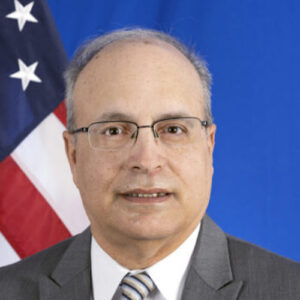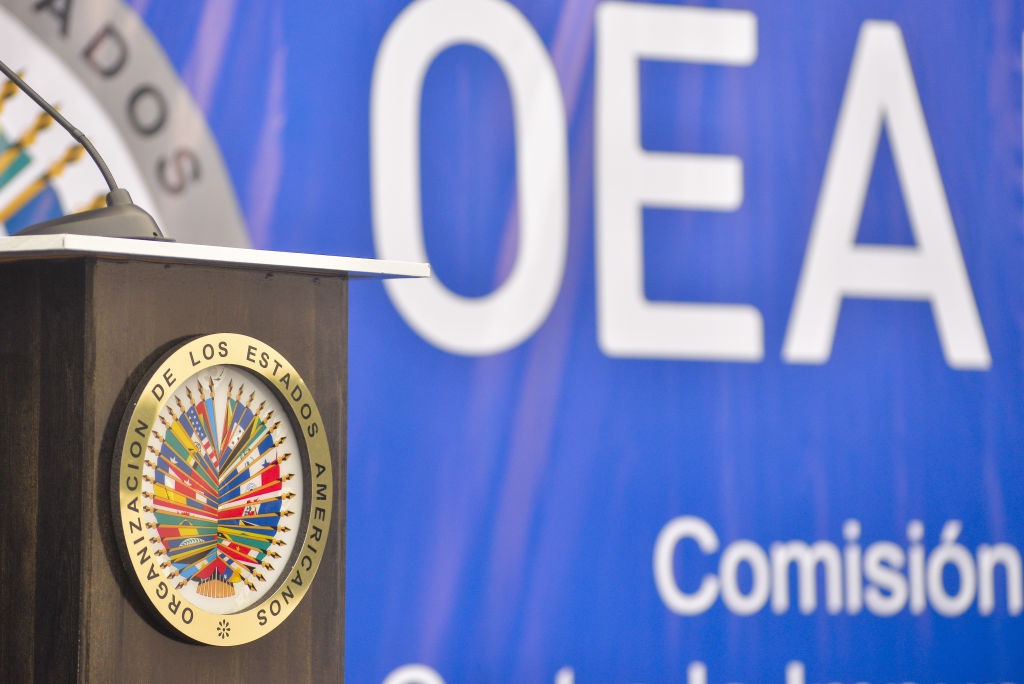
When Deputy Secretary of State Christopher Landau took the microphone at the Organization of American States’ (OAS) 55th General Assembly in June, his words landed like a thunderclap—and a dream come true for Washington’s antagonists.
“The United States is reviewing its membership in every international organization, including this one,” he warned, adding that unless the OAS could “prove its relevance,” Washington would “reconsider the substantial investment our taxpayers make here.” He openly questioned whether continued participation in—and funding of—the OAS serves the U.S. national interest.
That Landau issued this threat at the OAS is ironic. Latin America and the Caribbean have seen no shortage of populist leaders prone to tearing down institutions in the name of the people, replacing them with monuments to themselves. From Cuba to Nicaragua to Venezuela, many have long railed against the OAS as a colonial tool of the U.S., urging the region to abandon it to isolate Washington. These adversaries likely never imagined that the OAS’s unraveling could come at the hands of the U.S. itself.
Landau’s threat is merely the latest salvo in the Trump administration’s broader campaign against multilateralism. In February, President Trump signed an executive order mandating a 180-day review of all international organizations and treaties with which the U.S. is associated—an exercise designed to identify candidates for withdrawal or defunding. Since then, the Trump administration has formally notified the UN that the U.S. will exit both the World Health Organization (by January 2026) and UNESCO (by the end of 2026). Landau leveled the threat of withdrawal from the OAS by citing the organization’s “failure” to act assertively enough on the political crises in Haiti and Venezuela.
What often stands out in critiques like these, however, is a fundamental misunderstanding of the OAS’s structure and purpose. The OAS operates under a charter adopted in 1948, amended since, that prioritizes consensus, state sovereignty, and limited central authority. Unlike the UN or NATO, it lacks enforcement tools and does not function as a supranational body. It’s constrained not by will but rather by member-state divisions and a modest budget.
Some skeptics argue that shedding multilateral obligations frees America from “globalist constraints.” However, recent history suggests the opposite. For example, the 2018 U.S. withdrawal from the UN Human Rights Council ceded agenda-setting power to Beijing. Not long after the U.S. departed, China pushed several resolutions aimed at recasting human rights through the lens of national sovereignty, effectively shifting away from international accountability. Pulling out of the OAS would repeat this error on Washington’s doorstep, just as challenges like mass migration, transnational crime, and digital disinformation require more cooperation, not less. The strategic costs would be immense: the U.S. would forfeit its dominant voice in a body central to regional legitimacy and institution-building. In the resulting vacuum, extra-regional actors—China chief among them—would expand their footprint, reshaping hemispheric norms to their advantage.
A history of collaboration
Over the past seventy years, the OAS has developed a sophisticated regional legal and political architecture. A cornerstone is the Inter-American Commission on Human Rights (IACHR), which empowers citizens across the Americas to challenge state abuses. Since 1979, it has documented violations under Southern Cone military dictatorships; supported transitional justice efforts in El Salvador, Guatemala, and Peru; and actively monitored democratic backsliding in Nicaragua, Venezuela, and, more recently, El Salvador and Guatemala. In 2024 alone, the IACHR processed over 2,000 petitions and issued 43 precautionary measures, vital lifelines that protect journalists, environmental defenders and political dissidents.
In January, the U.S. suspended all voluntary funding to the IACHR. Paradoxically, however, it also aggressively campaigned for the election of Rosa María Payá—an anti-Castro activist—to the Commission. The contradiction is telling: withdrawing resources while demanding influence.
Meanwhile, the Electoral Observation Missions (EOMs) have evaluated over 300 elections since 1962, helping to set the global standard for election monitoring. In just the past two years, OAS observers have monitored elections in Ecuador, El Salvador, Guatemala, and Panama, often under difficult political and security conditions. Their detailed recommendations have strengthened campaign-finance oversight and ballot-box cybersecurity.
Guatemala offers a compelling example. During the country’s turbulent 2023 elections, the OAS helped safeguard the integrity of the vote amid legal and political challenges, issuing strong statements and convening emergency sessions of its Permanent Council. The organization’s sustained engagement helped preserve democratic order and reaffirmed the credibility of the Inter-American System. The IACHR also issued precautionary measures to protect then-candidate Bernardo Arévalo amid threats, and last year, Arévalo thanked the OAS General Assembly, saying that it had “played a pivotal role in catalyzing global support for the Guatemalan people’s struggle for sovereignty.” Tools like the Inter-American Democratic Charter (IADC) and voluntary diplomatic coalitions—such as the “Voluntary Group” of member states committed to activating the IADC in defense of democratic norms—remain essential. With renewed commitment and strategic engagement, especially from the U.S., these instruments can evolve into even more powerful mechanisms for regional action.
Reforming without dismantling
To be clear, the OAS needs to become more efficient. But changes are already happening. In 2024, the Permanent Council commissioned an external firm to conduct a full performance audit. The resulting report outlined dozens of reforms—streamlined staffing, a reformed budget process, modernized IT systems—many of which are underway.
Multilateralism is sometimes caricatured as naïve altruism. But as Landau fails to recognize, it is fundamentally about power-multiplication. For a sliver of the State Department’s budget, the OAS provides the U.S. with vigilant oversight of other countries’ elections and human rights at a time of democratic erosion; a forum to contest illiberal narratives; an opportunity to reach consensus on a range of priority issues for Washington; and a coalition ready to respond when peace and security are threatened.
Abandoning the OAS would not make America stronger. It would render the U.S. deaf to the hemisphere’s conversations and blind to its crises, while inviting others to write the script. At a time when global norms are being renegotiated in real time, that is a concession no great power can afford.






